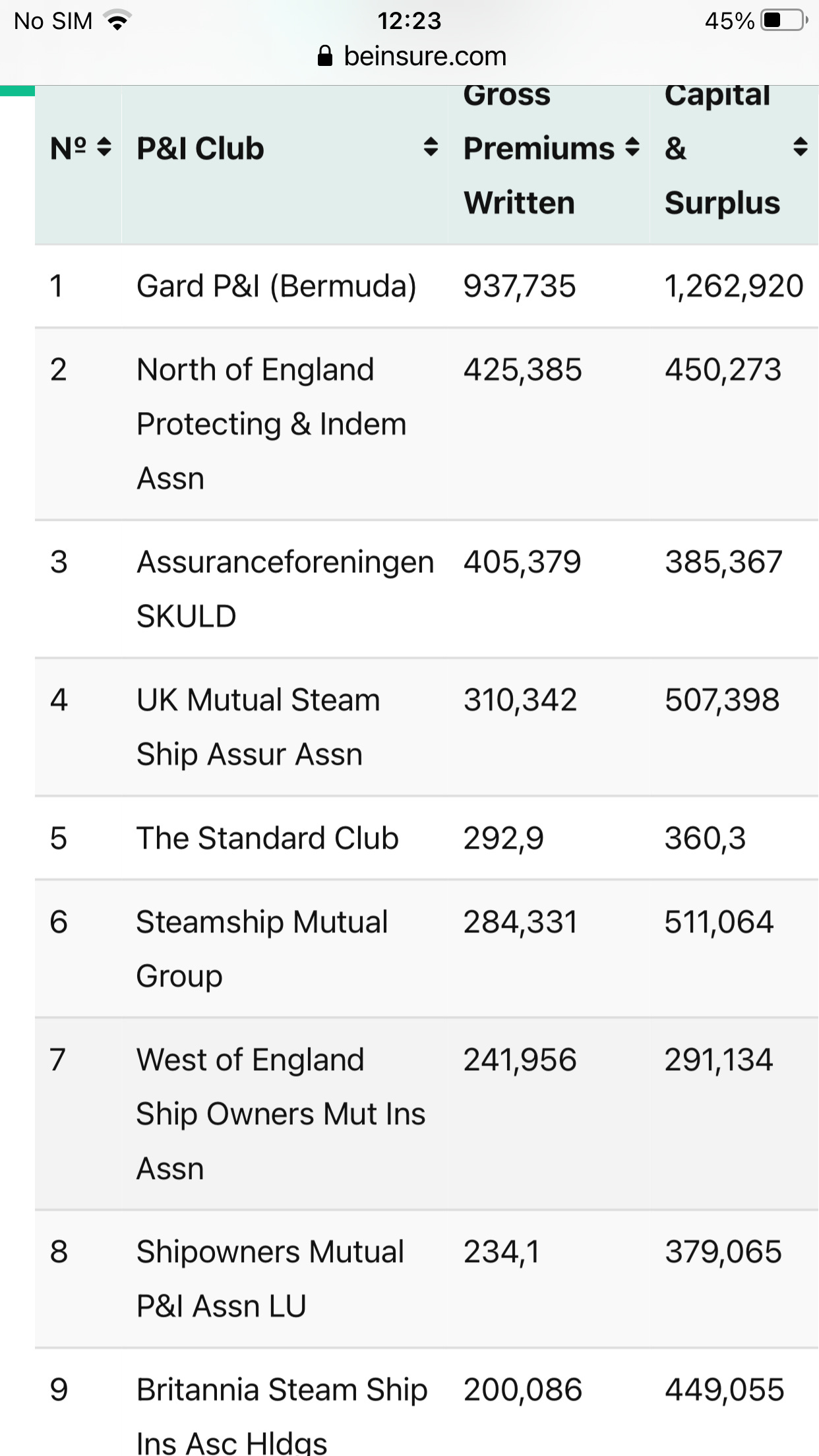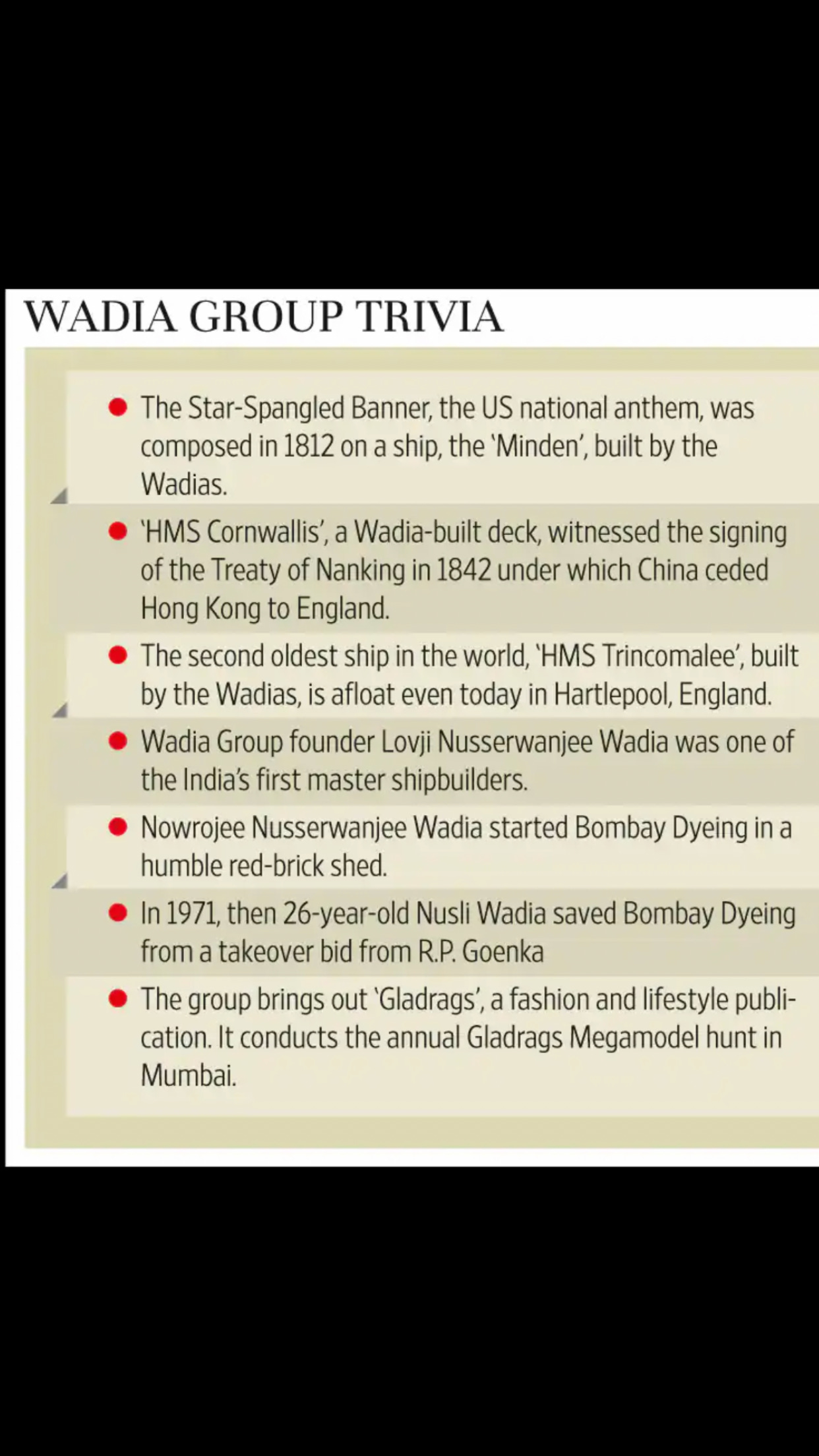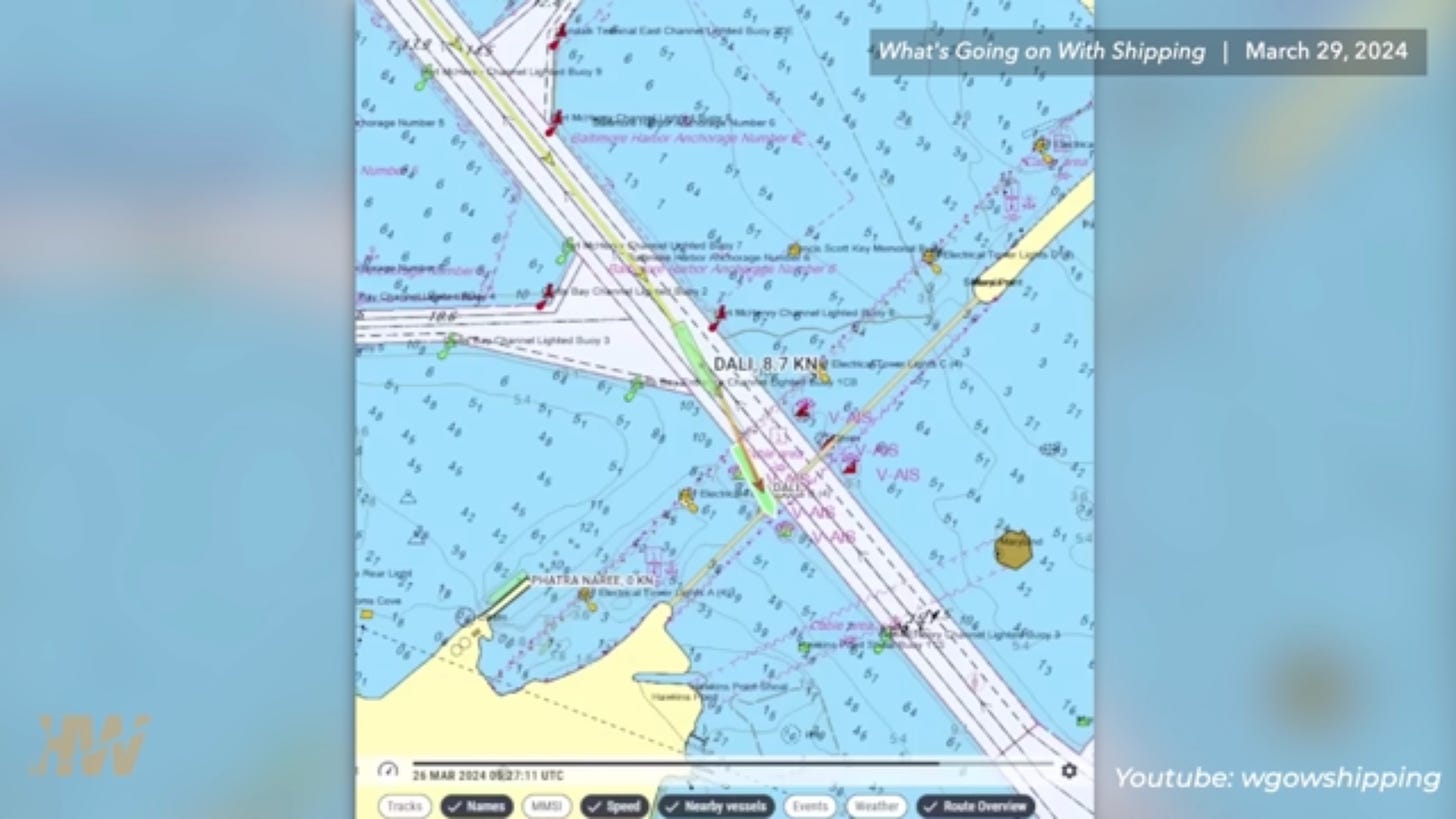Lets take another look at the Francis Scott Key Bridge Collapse. I discussed my early thoughts on the “Accident” here
https://pete843.substack.com/p/francis-scott-key-bridge-collapse
I did not seriously contemplate a cyberattack because I don’t know much about cyberattacks and ships and I was dealing with health issues, so my bandwidth was limited. I think it is still unlikely after a bit of research, but I think it should be explored, if only because so many Swamp Creatures deny the possibility
Cyber attacks target a different part of the ship: the IT computer — a separate system the crew uses to access the internet. Cybercriminals typically target the IT system to steal valuable information that can be held for ransom. There have been no reported issues with the Dali’s IT computer.
“Whilst there have been concerns in the industry that it is theoretically possible to ‘hack a ship,’ there has never been a real-world example of a ‘cyber-hijacking’ of a ship in that way,” said van de Waal.
Thats pretty lame. There is a first time for everything (and its not the first time as I will show below).
Coordinating an attack of this scale would take an “astronomic” level of planning that likely wouldn’t have the desired effect, considering that this event occurred on a bridge with little traffic in the middle of the night, Tait said.
More lameness. State actors, including yours (US) truly are capable of an enormous amount of planning. And who is to state what is the desired effect?. It may well have been that minimizing the death toll was a priority .
This reminds me of the argument against Sars-Cov-2 not being a bioweapon because it didnt kill anybody but old and sick or people with gross morbidities. I remind you of Ralph Baric in 2006 stating:
Will synthetic or recombinant bioweapons be developed for BW use? If the main purpose is to kill and inspire fear in human populations, natural source pathogens likely provide a more reliable source of starting material......
If notoriety, fear and directing foreign government policies are principle objectives, then the release and subsequent discovery of a synthetically derived virus bioweapon garner tremendous media coverage, inspire fear and terrorize human populations and direct severe pressure on government officials to respond in predicted ways.
https://www.jcvi.org/sites/default/files/assets/projects/synthetic-genomics-options-for-governance/Baric-Synthetic-Viral-Genomics.pdf
Now, back to how this had never been done before. This is not true, although not done with catastrophic results.
In 2017 hackers took control over container vessel in Mediterranean Sea. They gained full control to ship’s navigational systems with purpose to steer vessel to convenient place for boarding her. Crew regained control of vessel after ten hours and bringing IT team on board
https://bibliotekanauki.pl/articles/24201417.pdf
But why the effort to deny a cyberattack?. Maybe if those doing the denying were responsible, like COVID, denial before investigation makes perfect sense.
There may also be another reason too.
Insurers now are limiting claims by application two clauses published by International Underwriters Association (IUA). Clause IUA 09‐081 CYBER LOSS ABSOLUTE EXCLUSION CLAUSE and clause IUA 09‐0812 CYBER LOSS LIMITED EXCLUSION CLAUSE are excluding any cyber loss from insurance cover
https://bibliotekanauki.pl/articles/24201417.pdf
So it may be possible that the Dali insurance would be void if this was a cyber attack. While the Federal Government has said they will pay the costs to rebuild what they really mean is they will pay the upfront costs until the insurance can be collected and make up any shortfalls. Collecting on the insurance is important.
The Insurance Company would surely be interested in proving cyberattack if they had an exclusion clause
LONDON, March 28 (Reuters) - Britannia, the insurer of container ship the Dali, is working with the vessel's owner and U.S. authorities on the investigation into the collapse of Baltimore's Francis Scott Key Bridge, the insurer said on Thursday.
Ship liability insurance, which covers marine environmental damage and injury, is provided through protection and indemnity insurers such as Britannia, known as P&I Clubs.
The International Group of P&I Clubs collectively insures approximately 90% of the world's ocean-going tonnage and member P&I clubs mutually reinsure each other by sharing claims above $10 million. The group holds reinsurance cover up to the value of $3.1 billion.
The P&I Clubs may be liable for issues such as the repair of the bridge and clearance of the wreckage, one industry source said.
So they share the losses. Nice. Sort of like Socialism. Cant imagine there is any collusion in setting terms and rates either.😂
There are 13 P&I Clubs which comprise the International Group (the “Group”) between them provide marine liability cover (protection and indemnity) for approximately 90% of the world’s ocean-going tonnage. Britannia is the 9th largest P&I Club
https://beinsure.com/ranking/top-international-groups-pi-clubs/
The parent company of Britannia is Britannia Industries which is part of the Wadia Group, led by Nusli Wadia, who serves as the Chairman of the company. This is mainly an Indian multinational food products company, which sells biscuits, breads and dairy products, but they have other interests
Wadia was actually founded in 1736 as shipbuilders, and they secured contracts with the British East India Company to build ships and docks in Bombay . No doubt these ships played a role in the British Opium Trade with China.
Here is some interesting trivia
So Francis Scott Key Bridge, named after the author of the text of the American national anthem "The Star-Spangled Banner”, is destroyed by a ship with an all Indian crew that was insured by the descendants of the Indian builder of the ship in which the Star-Spangled Banner was composed
The ships name Dali is an Indian name for girls meaning Drawn up of God. Drawn up in this context may be an irresistible or compelling force of God. So whatever force directed Dali to the bridge was done by those who identify with or as God.
Ok, maybe thats stretching it. Anyways, thats enough trivia.
Just to be clear , I am not asserting this was a cyberattack, or that it was only a cyberattack. Just like the Towers on 9/11 were likely brought down by planes hitting the towers and replanted explosives, engine tampering during port maintenance and cyberattack may both have been used.
Alternatively, and perhaps more likely it just was an Accident due to some combination of improbable but possible bad luck (timing) coupled with outflow from the Curtis Channel and the Port Anchor drop.
We cant rule anything out, can we?





